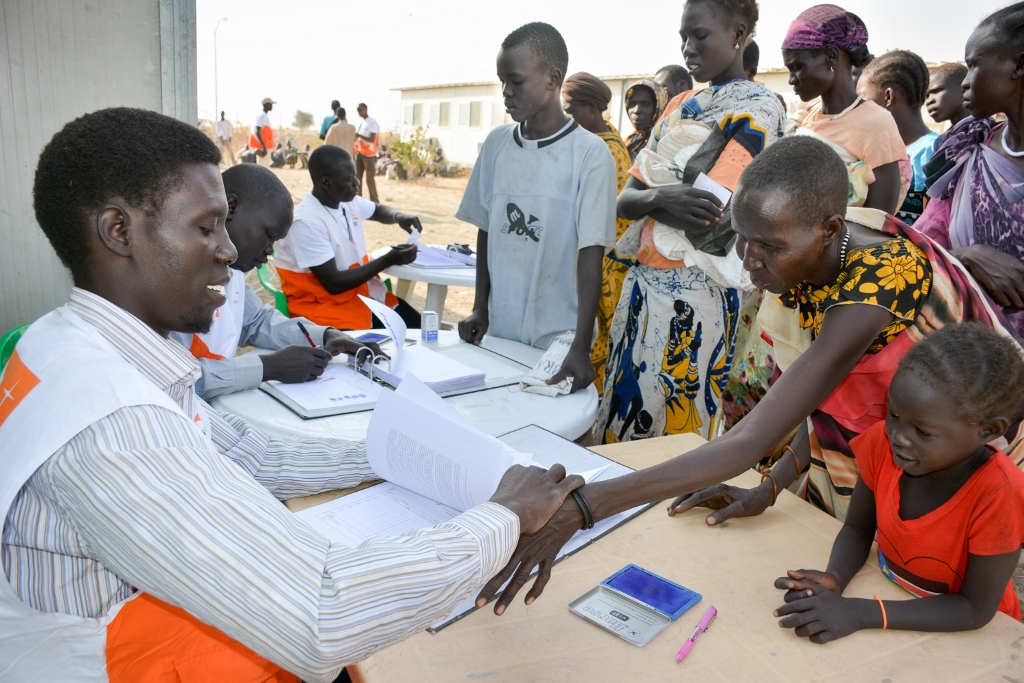Today, on the United States Agency for International Development’s (USAID) 55th anniversary, World Vision USA Director of Government Relations answers questions about foreign assistance. As you will see, there is a lot to celebrate!
What is foreign assistance and how does it work?
Foreign assistance, also called foreign aid, is money provided by the United States to other countries for a variety of purposes — some strategic, some humanitarian. Fighting poverty, hunger, and disease, and promoting economic development and growth are among the chief objectives of foreign assistance. In many cases — particularly where poverty alleviation is concerned — foreign assistance is not sent directly to another country’s government but rather is delivered by non-governmental organizations, including faith groups like World Vision, Food for the Hungry, and Catholic Relief Services. Faith-based organizations are necessary partners with the U.S. Government because our approach to helping those in need incorporates local faith communities, which are critical to achieving our goals to lift communities out of poverty and create self-sustainability.
Does U.S. aid work?
Yes, U.S. foreign assistance works. It puts children in school, helps women start businesses to provide for their families, prevents the spread of malaria and HIV, assists farmers working to improve their crops, and protects children from violence and exploitation. This assistance has led to great progress in reducing poverty, saving lives, and helping children and their families have a brighter future. For example, since 1990, 2.6 billion people have gained access to improved sources of drinking water and the number of preventable deaths of children under 5 has been cut by more than half, from 12.6 million to 5.9 million.
How much of my tax dollars are going to foreign assistance?
Would you believe that less than 1 percent of the federal budget goes to poverty-focused foreign assistance? This is about $32 billion dollars or around $80 per taxpayer per year. This is less than the average American spends on candy a year! This funding helps the U.S. by building trading partners and creating opportunities and livelihoods in countries that can be our allies, rather than our enemies. We get a great return on our investment.
Who decides where foreign assistance goes, and how do they make that decision?
The decisions on the federal budget are made by both Congress and the President. Every year, the President sends a budget to Congress in February. Congress then crafts its own budget resolution that sets parameters for the Appropriations Committee to determine how to spend the overall budget allocation for the year. The Appropriations Committee goes through each federal agency and each account to determine where the money should be spent, looking at things like program effectiveness and priorities of the American people. In the case of foreign assistance, the limited dollars must be allocated across a variety of programs including education, maternal and child health, nutrition, water, refugee assistance, and programs to respond to disasters. This often requires some tough decisions.
What can we do to help make sure money goes to people that need it?
As Congress and the President make decisions around the budget, hearing from their constituents like you is the most important. They need to know that you care about programs that are helping the poor around the world, programs that are saving lives, protecting children, and lifting families out of poverty. But we also need to hold our government accountable for ensuring that programs are run efficiently and effectively. Thankfully in the area of foreign assistance, we can see from the tremendous progress of the last 25 years that this funding is making a real difference.
Take action in support of life-saving foreign assistance here.
Photo: Young Nyanasir Chol (in a red t-shirt) watches as her mother’s finger print is taken in the World Vision food distribution verification queue at Malakal, South Sudan. © 2014 World Vision/ photo by Nhial Wei



One Comment